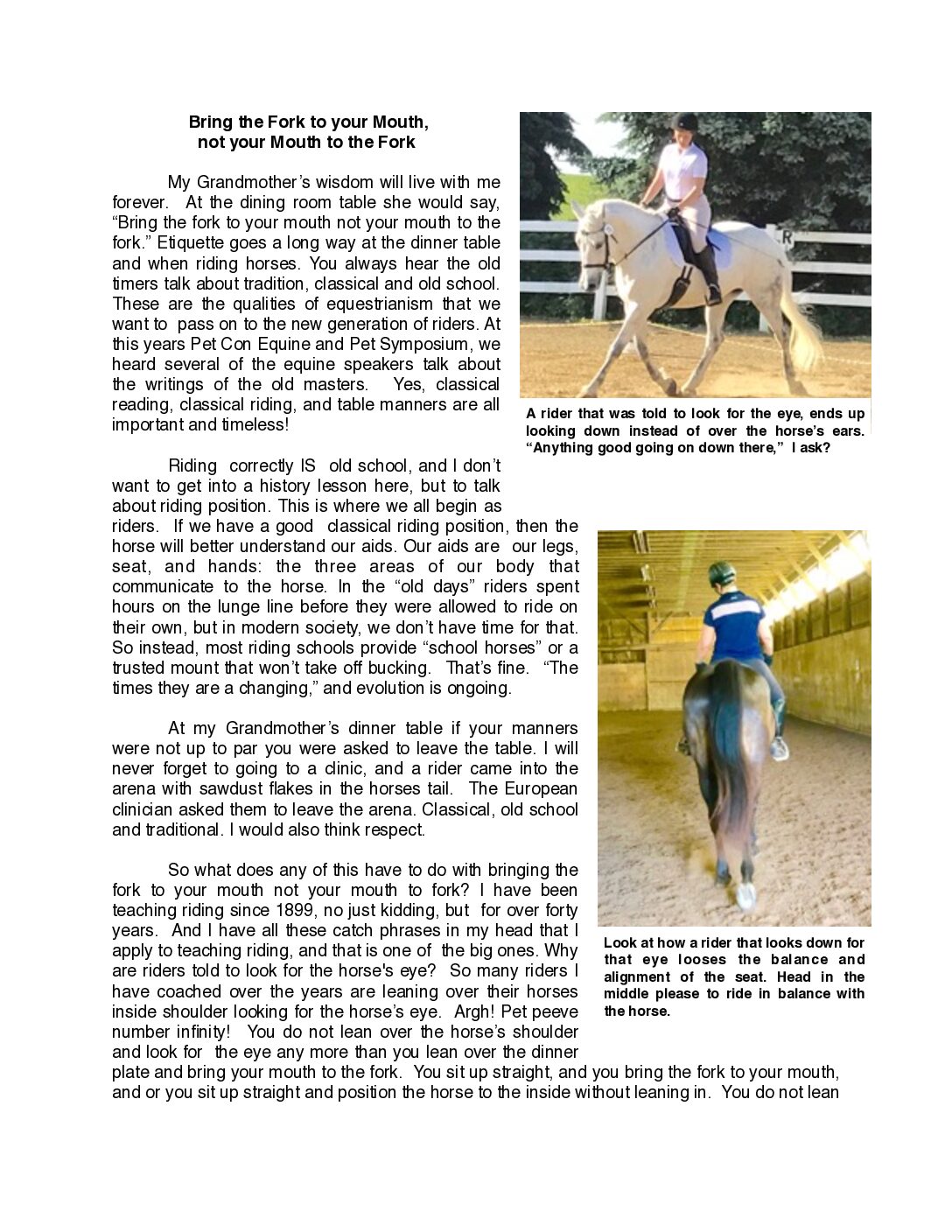My Grandmother’s wisdom will live with me forever. At the dining room table she would say, “Bring the fork to your mouth not your mouth to the fork.” Etiquette goes a long way at the dinner table and when riding horses. You always hear the old timers talk about tradition, classical and old school. These are the qualities of equestrianism that we want to pass on to the new generation of riders. At this years Pet Con Equine and Pet Symposium, we heard several of the equine speakers talk about the writings of the old masters. Yes, classical reading, classical riding, and table manners are all important and timeless!
Riding correctly IS old school, and I don’t want to get into a history lesson here, but to talk about riding position. This is where we all begin as riders. If we have a good classical riding position, then the horse will better understand our aids. Our aids are our legs, seat, and hands: the three areas of our body that communicate to the horse. In the “old days” riders spent hours on the lunge line before they were allowed to ride on their own, but in modern society, we don’t have time for that. So instead, most riding schools provide “school horses” or a trusted mount that won’t take off bucking. That’s fine. “The times they are a changing,” and evolution is ongoing.
At my Grandmother’s dinner table if your manners were not up to par you were asked to leave the table. I will never forget to going to a clinic, and a rider came into the arena with sawdust flakes in the horses tail. The European clinician asked them to leave the arena. Classical, old school and traditional. I would also think respect.
So what does any of this have to do with bringing the fork to your mouth not your mouth to fork? I have been teaching riding since 1899, no just kidding, but for over forty years. And I have all these catch phrases in my head that I apply to teaching riding, and that is one of the big ones. Why are riders told to look for the horse’s eye? So many riders I have coached over the years are leaning over their horses inside shoulder looking for the horse’s eye. Argh! Pet peeve number infinity! You do not lean over the horse’s shoulder and look for the eye any more than you lean over the dinner plate and bring your mouth to the fork. You sit up straight, and you bring the fork to your mouth, and or you sit up straight and position the horse to the inside without leaning in. You do not lean over and look for the eye; the eye is there. The rider brings the eye to her not you to the eye.
Leaning in is a bad habit for a rider, and a good way to break that is to learn to ride bareback. If you lean and look for that eye, you may just slide right off. The rider is to sit straight and if they are looking down or in, (where is that darn eye?), it unbalances the seat and a whole slither of basic riding position unravels. Keep your head balanced in the middle of your shoulders just like you want your horse’s head. When the rider is balanced in the center of the horse, it is way easier to keep the horse balanced and between the aids.
So whether you are riding your horse or eating dinner at Grandma’s, remember to “bring the fork to your mouth, not your mouth to the fork.” Tradition, old school and classical learning can go a long way in this millennium world. Trust me that horse’s eye is there, you do not need to go leaning over the horse’s shoulder looking for it any more than you need to lean over your dinner plate.



